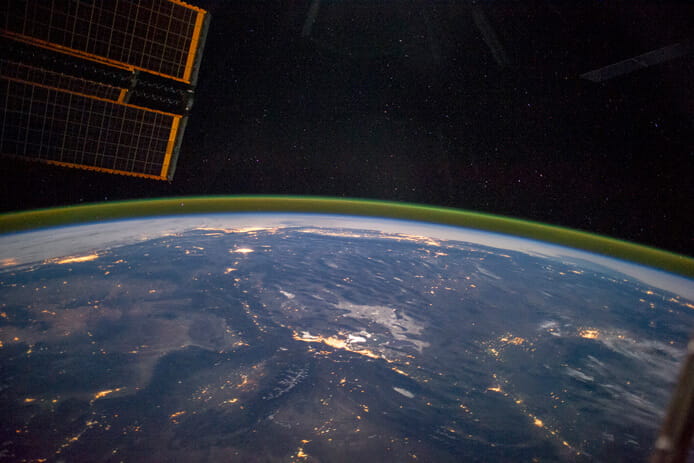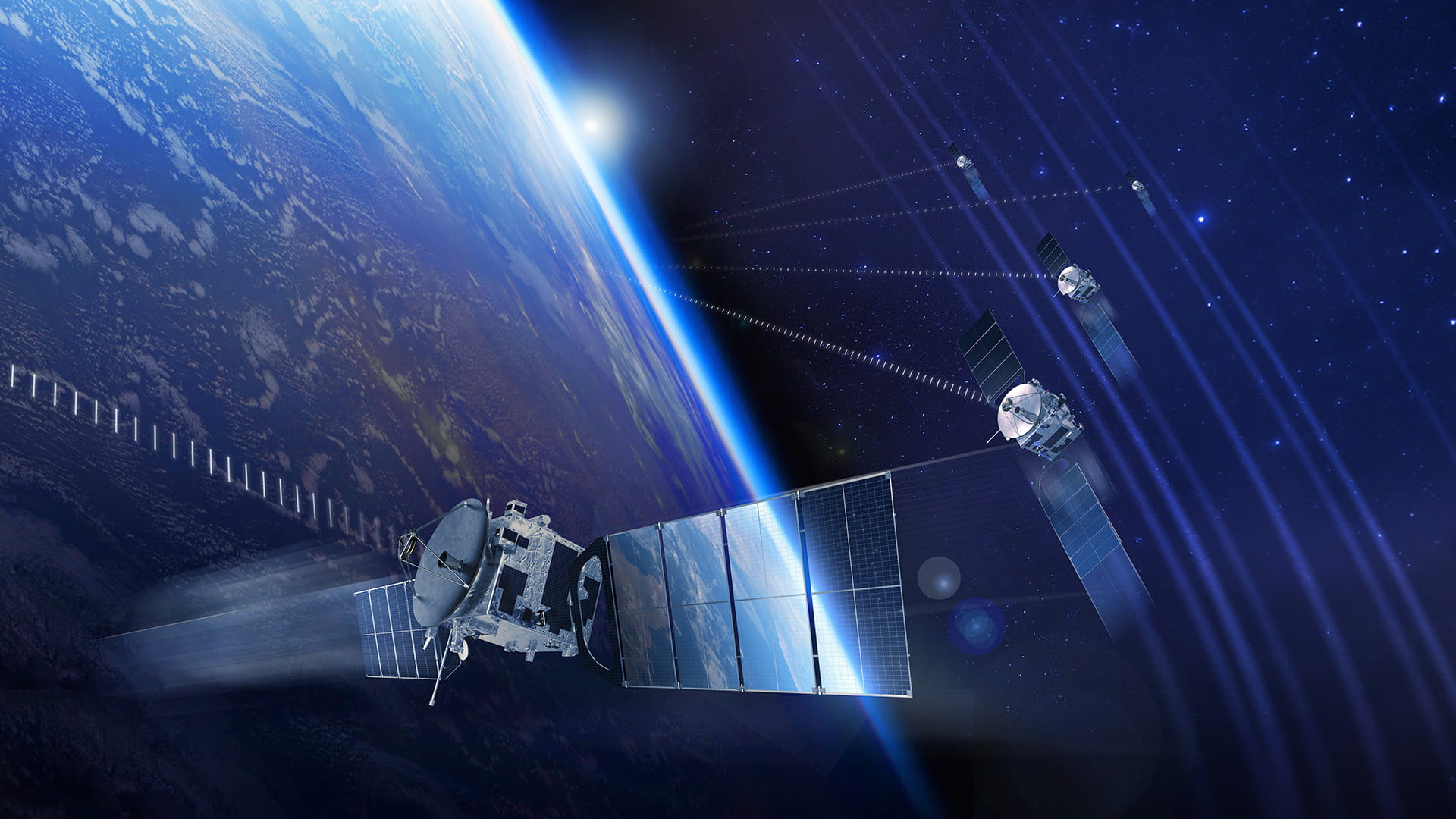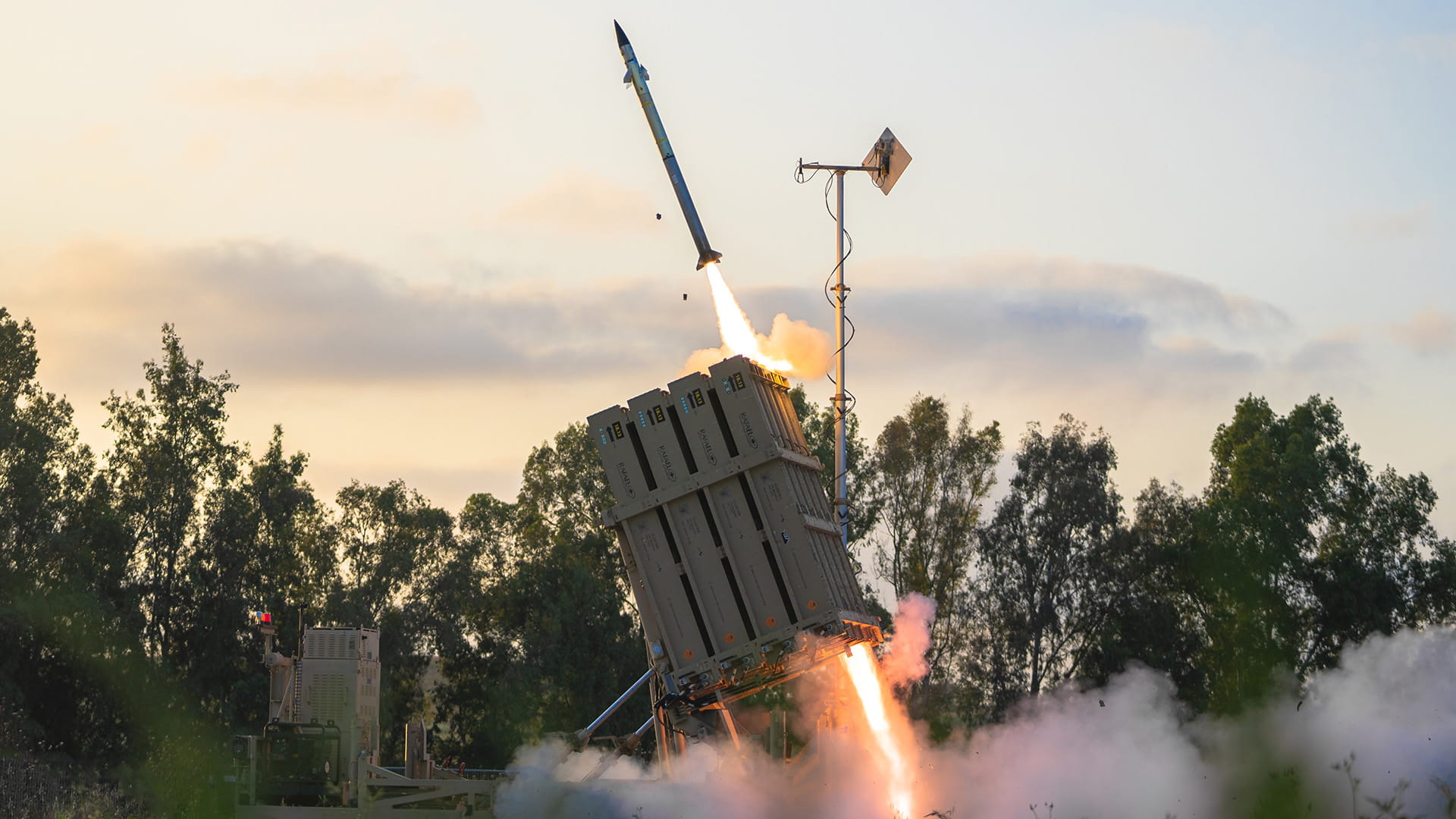Space: Where every ounce counts
Raytheon ELCAN uses digital engineering to lighten space optics
For centuries, stargazers have wondered why the night sky is sometimes so bright that they could read without moonlight or candles.
The phenomenon became known as the “bright nights” mystery. WINDII, or the Wind Imaging Interferometer sensor onboard a NASA satellite, helped solve the mystery by measuring airglow – the visible light released when oxygen atoms try to reform oxygen molecules in the Earth’s atmosphere. Raytheon ELCAN was part of the international science team that designed and manufactured WINDII, which first measured airglow.
The first step in the discovery was just getting the WINDII sensor into Earth's orbit, because when it comes to launching satellites into space, weight matters. The heavier they get, the more expensive they are to launch; even a few extra pounds can increase costs by tens of thousands of dollars. But building them too light could mean sacrificing performance and reliability.
It's all part of the tradeoff known in technology as SWaP-C, or size, weight, power consumption and cost. Optimizing those factors without sacrificing performance is the Holy Grail of designing and manufacturing opto-mechanical sub-systems for space, and Raytheon ELCAN, a Raytheon Technologies subsidiary, is using digital engineering – specifically, modeling and simulation – to reach that goal.
“Lighter and smaller is always a challenge,” said Reg Jonas, technical optical lead for Raytheon ELCAN. “Lighter, smaller and more robust have traditionally been mutually exclusive. However, technology is helping us overcome these barriers and push the boundaries.”
More than the sum of its parts
Mirrors gather and focus light. For infrared optics, these mirrors are typically made of aluminum because it’s lighter than glass. But it’s also harder and more costly to create a smooth surface on aluminum. Raytheon ELCAN developed an alternate approach to create lightweight mirrors for space.
“A human hair is 80 microns across,” said Wolf Glage, Raytheon ELCAN engineering vice president. “We’re working to achieve sub-micron surface finishes that will improve performance and reduce weight of the payloads launched into space. We know how to achieve this with glass.”
By strategically removing material from the backing rather than using a solid piece of glass, ELCAN reduced the weight of a single mirror from 7 pounds to 4.5 pounds with no loss of performance. This created a cost-savings of more than $100,000 for a single three-mirror system being sent into low-Earth orbit.
Using digital engineering to lighten the load
Testing these mirrors physically takes time and money, and if there’s a problem, it takes even more of both. Digital engineering reduces that cost and cuts the timeline significantly.
Using what’s known as finite element analysis software, designers can test individual pieces of systems to see how they’ll move under certain conditions and how much stress they can withstand.
“We can analyze the potential effects on the optical and mechanical performance before manufacturing the parts,” said Anthony De Aguiar, a mechanical designer at Raytheon ELCAN.
That modeling allows designers like De Aguiar to add features or modify parts to alter the natural vibration frequency, reducing shock and improving performance and reliability.
De Aguiar also works very closely with the on-site environmental testing team. Seemingly small problems like dust are very difficult to predict using software alone.
“Because we’re vertically integrated, I can go to the lab, run some tests and drive design changes based on updated results,” De Aguiar said. “That correlation activity is really, really important when dealing with critical systems.”
With aerospace and defense technology, reliability is important in every domain and especially true for space, where systems have to withstand extreme temperature fluctuations, particle bombardment, violent vibrations and supersonic launch speeds.
“The unique challenge with optics for space, well pretty much everything we do, is that it needs to work the first time,” said Tony Brinovec, program manager for space at ELCAN. “We can’t just go up there and fix it after it’s launched.”




